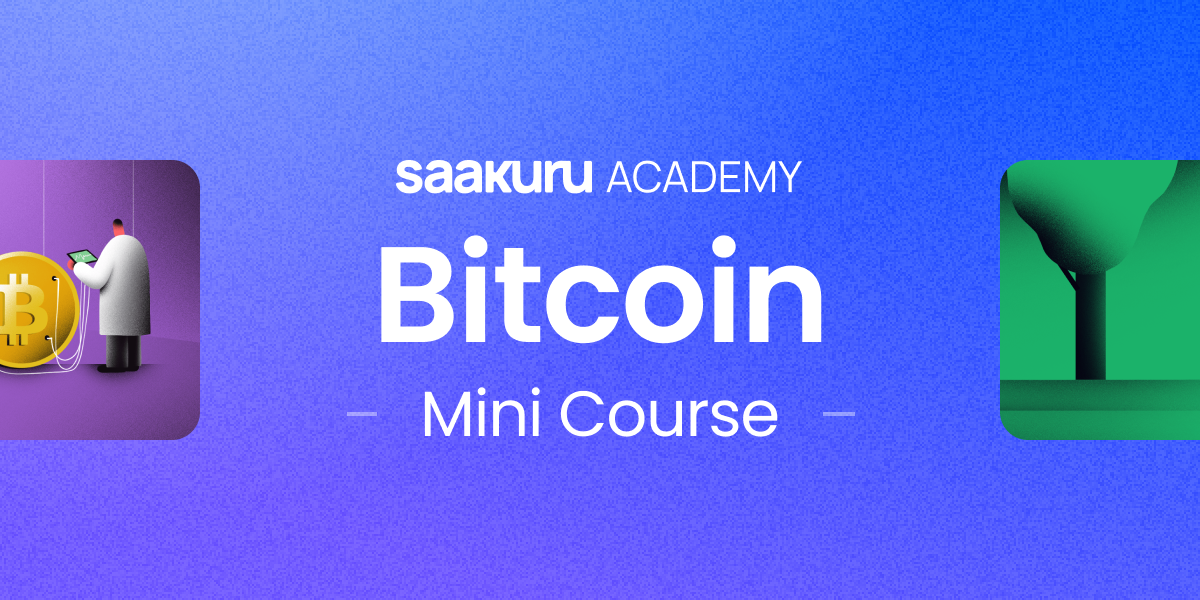
What is a fork in the cryptocurrency world?
Forks have become a fairly common occurrence within the cryptocurrency industry as many projects have grown in popularity and evolved over time. They are now an integral part of the blockchain system and help to ensure that existing cryptocurrency projects do not stagnate, become out of date, or get abandoned by their communities.
In this AAG Academy guide, we’ll look at what forks are used for, why they are so important to the cryptocurrency industry today, and the advantages they can bring. We’ll also touch upon how forks have been used by the likes of Bitcoin and Ethereum.
What is a fork?
A fork within the cryptocurrency industry is a process that happens when a blockchain implements changes or improvements to its protocol or rules. This causes the current blockchain to be split into two, with a new chain that heads off in its own direction — with the new changes or improvements in place — while the current chain remains in its original state.
Forks allow the developers of a cryptocurrency project to add new features that enhance functionality, and fix issues or vulnerabilities to improve security. They may also be used to address community concerns about a project’s direction, particularly when the community disagrees with a project’s original design and how it operates.
When it comes to decentralized cryptocurrency projects — which are by far the most popular today — it is often the responsibility of the community to decide what kinds of changes are rolled out. Users who have a stake in the project, sometimes in the form of governance tokens, get the opportunity to vote on proposed upgrades or improvements.
Both Bitcoin and Ethereum, the biggest cryptocurrencies on the planet in terms of market value, have been forked in the past. Ethereum has three different chains — Ethereum, Ethereum Classic, and Ethereum 2.0 — each of which can be thought of as different versions of the same operating system which share the same foundations but have new features and improvements.
Why are forks important in cryptocurrency?
Cryptocurrency projects that have grown in popularity and received lots of investment cannot just shut down and start again when the community decides that they should do things differently or take a new direction. Scrapping an existing blockchain and starting again with a new one is out of the question, since that essentially abandons the original project.
Forks are the ideal alternative. They allow projects to implement all kinds of upgrades and improvements, and completely change the direction of the project if necessary — all of which the community may have a say in — while keeping the original project intact. This may mean that existing tokens are valid and usable across all chains, though not always.
In addition to adding upgrades and improvements, forks can be used to solve disagreements between a project’s community. For instance, if one section of supporters believes that the project should operate in one way, and another section believes it should operate in a different way, forks can be used to keep both sections happy and give the project multiple directions.
It is important to note, however, that there are different types of forks, and while some are used to make small changes to a project, others are used to make major alterations that end up becoming entirely new projects themselves. We may also see “accidental” forks that occur not because the community voted on them, but because multiple miners got in each other’s way.
What are the types of forks?
There are two main types of forks that are commonly used within the cryptocurrency industry today, one of which can happen accidentally:
Soft forks
A soft fork is like a blockchain’s software update. It may add new features or make security enhancements, and it essentially becomes the new standard by which the cryptocurrency project operates — so long as all users adopt it. However, a soft fork does not typically make any major changes to a project’s fundamental code, so they are backwards compatible.
This means that after a soft fork has been implemented, any existing tokens, NFTs, and other assets held by investors are valid and can be used across all chains. For example, Bitcoin wallets that use the newer SegWit transaction protocol are still compatible with those that use the legacy protocol. You can read more about that in our in-depth guide.
Multiple soft forks can eventually be merged back into one blockchain if the company decides that’s the best way forward, or they may forever continue as two chains, each with their own features and functions that evolve somewhat independently.
You might be interested in: What is SegWit (Segregated Witness) in Bitcoin?
Hard forks
A hard fork makes major changes to a project’s code, so much so that it is no longer compatible with earlier blocks and therefore becomes a standalone chain. When this happens, rather than having two chains that run alongside each other with exactly the same history, we end up with two chains that run entirely independently — one of which has no history to begin with.
This requires the new chain to have its own token, which is not compatible with the blockchain from which it originated. In other words, tokens issued by the new project cannot be used on the original chain, and tokens issued on the original chain cannot be used on the new one.
Some well-known examples of hard forks are Bitcoin Cash and Bitcoin Gold. Both of these projects originated from the original Bitcoin blockchain, but because they operate so differently, they became new and independent projects, rather than upgrades to Bitcoin itself. Ethereum Classic is also a hard fork that was designed to operate with Ethereum’s original design.
Intentional and accidental forks
Hard forks are always intentional, which means they occurred because the community made a conscious decision to implement them. However, there are times when a soft fork may be accidental. This happens when two or more miners attempt to create the same block at the same time and end up creating a new chain entirely.
This may seem unlikely, but it’s certainly possible in larger networks when thousands of nodes are joining forces to process blocks as quickly as possible. Accidental forks are eventually resolved and eliminated when new blocks are added to one of the chains. The network then continues working on the larger chain and abandons the smaller one.
What are the benefits of forks in crypto?
We’ve touched upon many of the benefits of forks throughout this guide, but to ensure they aren’t missed, here’s a list of the most significant things forks are used for:
- To add new functions without creating an entirely new blockchain
- To fix security concerns
- To decide on the direction of a project or give a project multiple directions
- To create a new project from an existing one
References
Frequently Asked Questions
Hard forks make major changes to a project’s code and therefore become a new project themselves. They are not backwards compatible with the original blockchain.
Soft forks make minor changes and improvements to a project’s code and tend to run alongside the blockchain from which they originated. They are backwards compatible, share the same history as the original chain, and may be merged with the original chain later.
An imminent fork makes a cryptocurrency project somewhat unstable. There is usually some division among existing investors over the project’s future, while potential new investors are reluctant to commit their own cash until they have seen how the fork will impact the project. With that being the case, it’s normally not a good time to trade the cryptocurrency.
If you don’t already own tokens but you’re interested in investing, it may be a good idea to wait until you can be sure a project’s value isn’t going to drop significantly soon after you commit to it. While a temporary decrease may mean you can pick up tokens cheaper than usual, it may be too early to tell whether token prices will return to their previous levels.
If you already own tokens and you can’t be sure how other investors will react to a fork, it may be best to hold onto them for as long as possible to see what happens to the project once the fork has been implemented and things settle down. However, if you’re confident that the project’s value will drop and never recover, then it may be best to sell before that happens.
It is important to remember that every project is different and every fork is different. What happened to one project during or after a fork may not necessarily be repeated with another one, so it’s often very difficult to predict how everything will play out.
Disclaimer
This article is intended to provide generalized information designed to educate a broad segment of the public; it does not give personalized investment, legal, or other business and professional advice. Before taking any action, you should always consult with your own financial, legal, tax, investment, or other professional for advice on matters that affect you and/or your business.
Get news first
Be the first to get our newsletter full of company, product updates as well as market news.

















